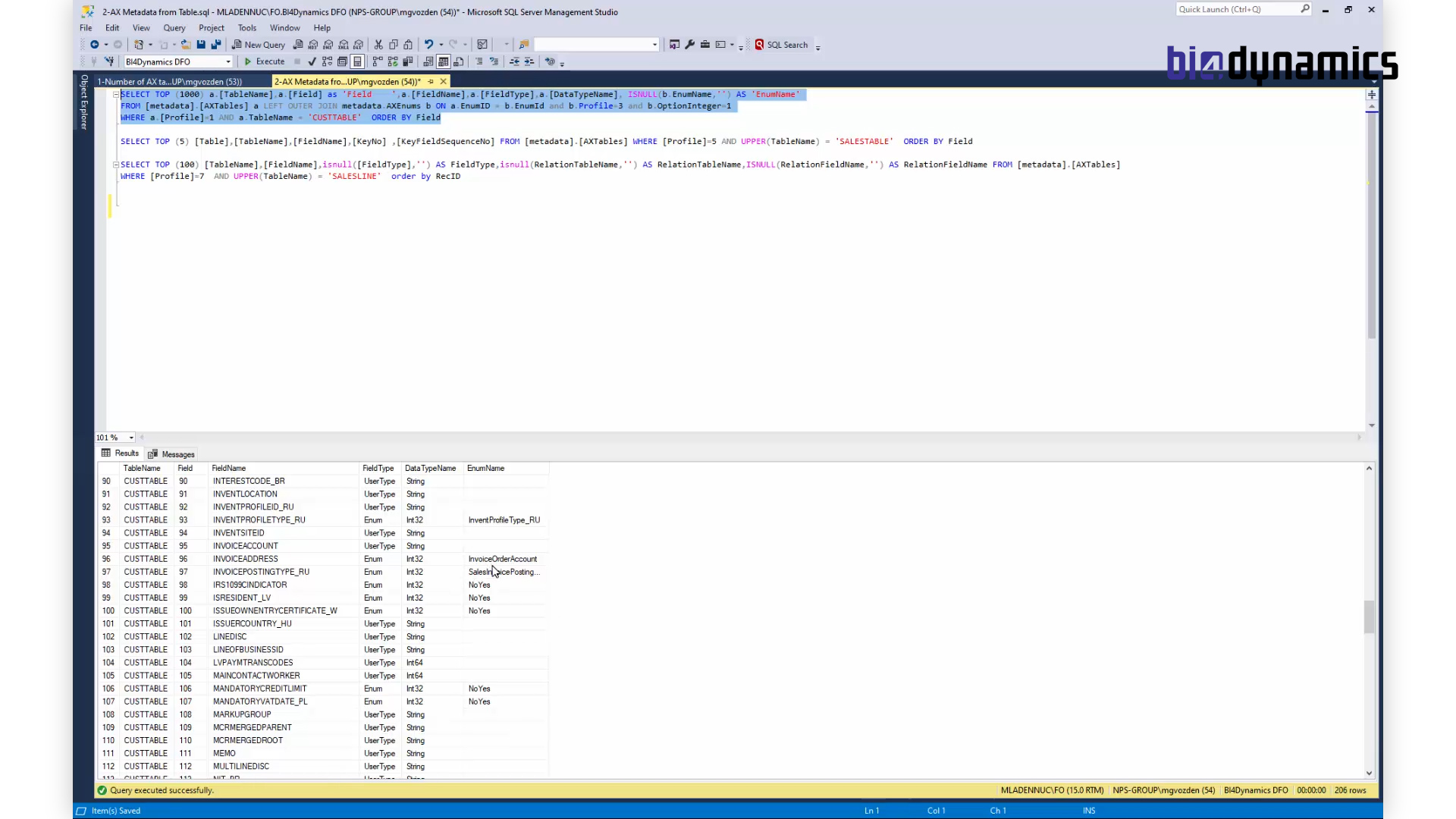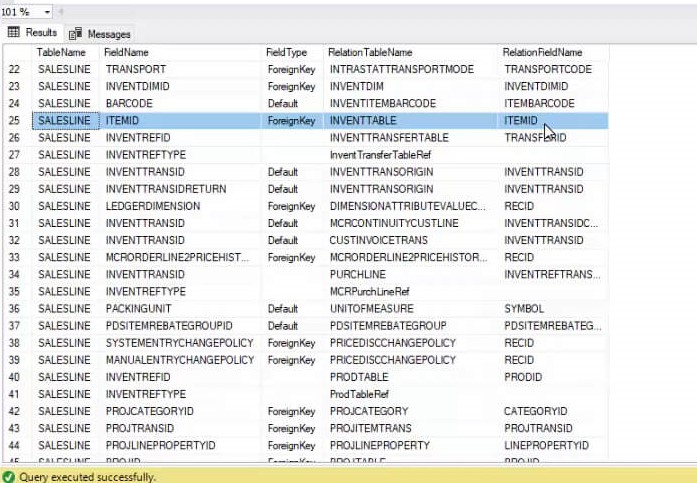In the realm of Business Intelligence (BI) projects, metadata plays a pivotal role. It provides essential information that enhances the speed, accuracy, and efficiency of data warehousing processes. In a BI project, particularly when integrating large-scale systems like Microsoft Dynamics, metadata isn’t just a helpful asset—it’s the foundation that allows for streamlined automation and accurate data modeling. This blog post delves into the significance of metadata and how it drives BI projects toward success, especially through automation tools like BI4Dynamics.
What is Metadata?
At its core, metadata refers to “data about data.” It’s the additional context or description that gives raw data more meaning and structure. To put it simply, metadata is the information that defines other data, such as:
- Geolocation and time information for photos
- File size and format in documents
- Table structure, column types, primary keys, and relationships between tables in a database
In the context of a Business Intelligence project, metadata refers to the details about the datasets being integrated from systems like Enterprise Resource Planning (ERP) platforms. It includes data like:
- Table names and descriptions
- Column definitions
- Primary keys, foreign keys, and relationships between different entities
- Option fields and enums (enumerated lists)
This wealth of information serves as a roadmap for BI projects, guiding developers and data scientists on how to model and transform the data effectively.
The Relevance of Metadata in BI Projects
The importance of metadata in BI projects is undeniable. It enables faster, more efficient solution development by providing developers and data engineers with all the necessary information about the structure, relationships, and attributes of the data. Here are the key reasons why metadata is crucial:
Accelerates Data Warehousing Development
One of the most significant benefits of metadata is that it speeds up the data warehousing process. Since metadata describes every detail of the data—from the structure of the tables to the relationships between columns—developers can quickly understand the datasets they are working with, even if they are unfamiliar with the source system. This detailed context allows for rapid development of data models and more efficient implementation of data pipelines.
For instance, if a BI project involves creating a data warehouse from an ERP system like Microsoft Dynamics, the metadata provides immediate insights into how tables like CustTable (with its 206 columns) relate to other key data structures. Without this metadata, developers would need to spend significant time manually analyzing the data, which could lead to delays and errors.
Enhances Accuracy in Data Modeling
Metadata also improves the accuracy of data modeling. In any BI project, it’s essential to establish relationships between various data entities to ensure accurate data analysis and reporting. Metadata provides the blueprints for these relationships.
For example, in Microsoft Dynamics, metadata might indicate that the SALESLINE table connects to the INVENTTABLE via the ITEMID column. This primary key-to-foreign key relationship is critical in building an accurate data model, ensuring that sales data is properly associated with inventory data. Missing or incorrect relationships in a data model could lead to incorrect analysis and poor decision-making.
See also Ensuring Data Quality In Business Intelligence With BI4Dynamics
Facilitates Automation in Data Integration
By using metadata, businesses can also automate many aspects of data integration. Tools like BI4Dynamics leverage metadata to automatically generate and transform data models based on the data available in systems like Microsoft Dynamics. BI4Dynamics can access and utilize metadata to automate the process of building a data warehouse, reducing manual intervention and allowing for quicker and more reliable project execution.
With BI4Dynamics, for example, the system is aware of the 10,885 tables in Microsoft Dynamics and can automatically pull detailed information about each table, such as columns, enums, and table relations. This metadata-driven approach means that even complex data models can be built and maintained with minimal manual effort, leading to faster project delivery and reduced costs.
How BI4Dynamics Uses Metadata for Automation
One of the standout examples of metadata utilization is found in the BI4Dynamics platform. BI4Dynamics taps into the power of metadata to automate the process of data warehousing from Microsoft Dynamics ERP systems. Here’s how it works:
- Access to Extensive Metadata: BI4Dynamics provides detailed access to the entire Dynamics metadata structure. This includes information about all 10,885 tables in the Dynamics version being used, as well as the individual columns within each table.
- Automatic Data Modeling: Based on the metadata, BI4Dynamics can automatically model the relationships between various tables and fields. For example, understanding that the
ITEMIDfield in theSALESLINEtable connects to theINVENTTABLEallows BI4Dynamics to automatically generate accurate data models for reporting and analytics. - Simplified Table Relationships: With access to metadata, BI4Dynamics can automatically understand the primary key and foreign key relationships between tables. This significantly simplifies the process of building accurate data models, ensuring that data from different tables is correctly related and easily queried.
The result is faster, more efficient data warehousing. With BI4Dynamics, businesses can skip much of the manual data modeling process and allow the platform to use metadata to build the data models needed for their BI projects.

Real-World Example: Microsoft Dynamics Metadata
Consider a BI project based on Microsoft Dynamics. Dynamics is a complex ERP system with thousands of tables and millions of rows of data. Each table contains numerous columns, and many columns relate to other tables via primary or foreign keys. Without metadata, building an accurate data model for a BI project would be extremely difficult and time-consuming.
However, by leveraging metadata, tools like BI4Dynamics can automatically pull details about each table and how they relate to others. For instance, metadata might show that the CustTable (Customer Table) has 206 columns, and the SALESLINE table connects to it through a specific key. This information enables BI4Dynamics to automatically generate the necessary relationships in the data model, ensuring the accuracy of any reports or analyses that are built on top of the data warehouse.
For developers who are unfamiliar with certain parts of the Dynamics system, this metadata is a lifeline. It provides all the necessary information to develop accurate data models without requiring deep expertise in each data source. See this in action in our youtube video.

Benefits of Metadata-Driven Development
Faster Solution Development
With access to detailed metadata, developers can build data warehouses and BI solutions much faster. Instead of spending days or weeks analyzing data structures and relationships, they can use metadata to quickly understand how the data is organized and how it should be modeled.
Improved Data Quality
Metadata-driven development ensures that the relationships between data entities are correctly defined, reducing the risk of errors in data modeling. This leads to better data quality and more reliable analytics.
Automation and Reduced Manual Effort
By leveraging metadata, tools like BI4Dynamics can automate much of the data modeling and integration process. This reduces the need for manual intervention and speeds up project delivery, all while improving the accuracy and consistency of the data models.
Conclusion
In conclusion, metadata is the backbone of any successful BI project. It not only accelerates the development of data warehouses but also improves the accuracy of data models, ensures proper relationships between tables, and facilitates automation. Tools like BI4Dynamics have harnessed the power of metadata to simplify and automate the BI process, enabling businesses to focus on extracting valuable insights from their data rather than getting bogged down in manual data modeling.
With the growing complexity of data environments, metadata will continue to play a critical role in helping organizations navigate and manage their BI projects effectively.
FAQs
What is metadata in a BI project?
Metadata in a BI project refers to information that describes the structure, relationships, and attributes of the data being used. This includes table names, column definitions, primary and foreign keys, and data relationships.
How does metadata help in BI projects?
Metadata helps BI projects by speeding up solution development, improving data accuracy, facilitating automation, and reducing the need for manual intervention in data modeling.
What is the role of metadata in Data Warehousing?
In data warehousing, metadata provides detailed descriptions of data sources, tables, columns, and relationships. This enables accurate data modeling and ensures that the data warehouse can be queried efficiently.
How does BI4Dynamics use metadata?
BI4Dynamics uses metadata from Microsoft Dynamics to automate data modeling, integration, and transformation processes. It pulls detailed information about tables, columns, and relationships to create accurate data models automatically.
Why is metadata important for automation in BI?
Metadata is essential for automation because it provides the necessary information for tools like BI4Dynamics to automatically build and manage data models. This reduces manual effort and speeds up project delivery.
How does metadata improve data quality in BI projects?
By providing detailed information about data structures and relationships, metadata ensures that data models are accurate and relationships between tables are correctly defined. This leads to improved data quality and more reliable analysis.

